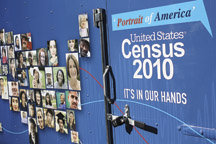A partisan battle shaping up between Republican and Democratic powerbrokers could decide whether or not Secaucus will move into one Hudson County freeholder district, or remain divided into two.
Currently, most of Secaucus lies within Freeholder District 9, represented by Albert Cifelli, with a small portion of the town falling into District 8, represented by Thomas Liggio.
The boundary lines of Hudson County’s nine freeholder districts are due to be redrawn as a result of the recently-released U.S. Census figures, and county Republicans are eager to complete a new freeholder map in time for the June party primaries ahead of this year’s freeholder elections.
Democrats would rather take a slower approach, completing new district boundaries in time for the freeholder races in 2014.
“The statutes don’t require that redistricting be finished in time for the next election,” said William O’Dea, chairman of the Hudson County freeholders. “The two parties have until May to come up with a map they both can agree on. If they can’t come to an agreement by then, a judge will make a decision. And the judge has until June to do that.”
The judge would decide on the districts, and may also decide whether they will go into effect right away.
O’Dea, a Democrat, said there’s a precedent for waiting. When U.S. Census figures were released in 1991, he said the new freeholder map was completed in time for the 1994 freeholder election cycle, and wasn’t rushed for the 1991 political season.
Yet Jose Arango, chairman of the Hudson County Republican Party, said, “Once the Census numbers are certified, it doesn’t make sense not to use them. People should run in new districts. Their position is we can wait. But the nine freeholder districts are supposed to have [roughly] equal populations. Some freeholder districts now have 59,000 people, while others have 90,000. If we continue to use the old freeholder map this year, we’re going to have unequal representation.”
At stake for Secaucus is whether it will get full representation on the Board of Chosen Freeholders – and if so, when.
Equal representation
According to the latest Census data, Hudson County now has 634,266 residents, and increase of 21,575, with the biggest population growth taking place in Hoboken. The city grew by 29.6 percent over the last decade.
Committees from both parties, one Democrat and one Republican, must now redraw the freeholder map, dividing the county population into nine relatively equal freeholder districts of roughly 70,000 residents each, plus or minus 2 percent. The trick will be to do this while still accounting for Hoboken’s population surge. Each party committee will put forward a proposed map, then meet to see if they can reconcile their two visions of the nine districts. If they can’t come to a resolution on their own a judge will be the final arbitrator.
Carving up a new map
Arango has been working with fellow Republican Russell Maffei, former chairman of the Hudson County Board of Elections, on the GOP map. Hudson County Democratic Organization Chairman and Bayonne Mayor Mark Smith has been working with John Bongowalch on the Democrats’ proposed map.
“I think the Democrats want to make the least changes [to the current map] as possible. I guess the Republican map makes more broader changes,” said O’Dea who said he has not been privy to either party’s proposed map.
Despite participating in a public redistricting forum in Secaucus on March 16 opposite Arango, when called for comment last week, Mayor Smith said through a spokesman that “it’s premature to talk about redistricting at this time.”
The current freeholder map includes a seat for Bayonne; three full seats in Jersey City; another seat with all of Hoboken and a slice of Jersey City; a seat that represents West New York, Weehawken, and Guttenberg; a seat that represents Union City; a seat for all of North Bergen and a portion of Secaucus; and then another seat that has most of Secaucus, all of Kearny, Harrison, and East Newark.
But Arango argued many of these districts are now unbalanced, given the latest Census numbers.
“As it stands right now, [Freeholder District 1] is short by 3,000 people, on average,” he said. “The third freeholder district is short, like, 4,000 people. The 9th District, which includes Secaucus, is short about 5,000 people. But then Jersey City and Hoboken increased their population. The representation will be unbalanced if we wait and let people run this year in their old districts.”
All nine of the incumbent freeholders are up for reelection this year, and any suggestion that their districts will change before the election has some concerned. Significantly changing demographic groups and voting blocs in a district could affect the outcome of the fall elections, a fact alluded to by O’Dea.
“Unlike the Democrats and Republicans in the legislature, most of us haven’t seen any maps,” he said. “There have been no public hearings. There haven’t been any discussions, other than what’s gone on behind closed doors. I think it’s more prudent to do it in a manner that allows for public input, then put something into effect in three years, in the next election.”
Although Hudson County is considered friendly territory for Democrats – with a consistent level of registered Democrats at about 125,000 over that last four years – the county has become more independent in recent years, with nearly 130,000 registered voters claiming no party affiliation. Almost 30,000 voters are registered Republicans.
E-mail E. Assata Wright at awright@hudsonreporter.com.
